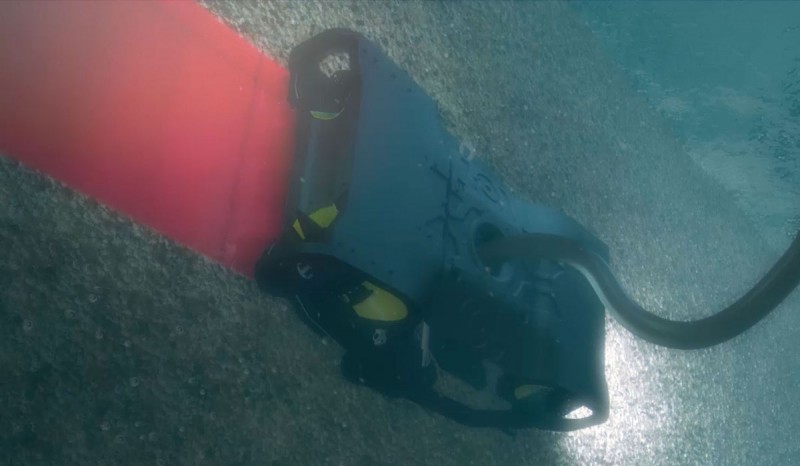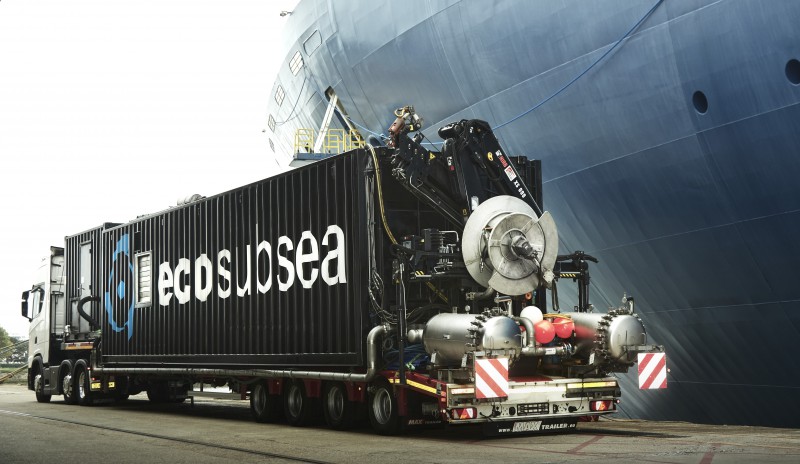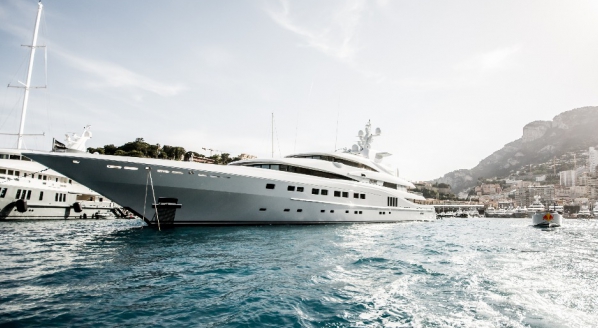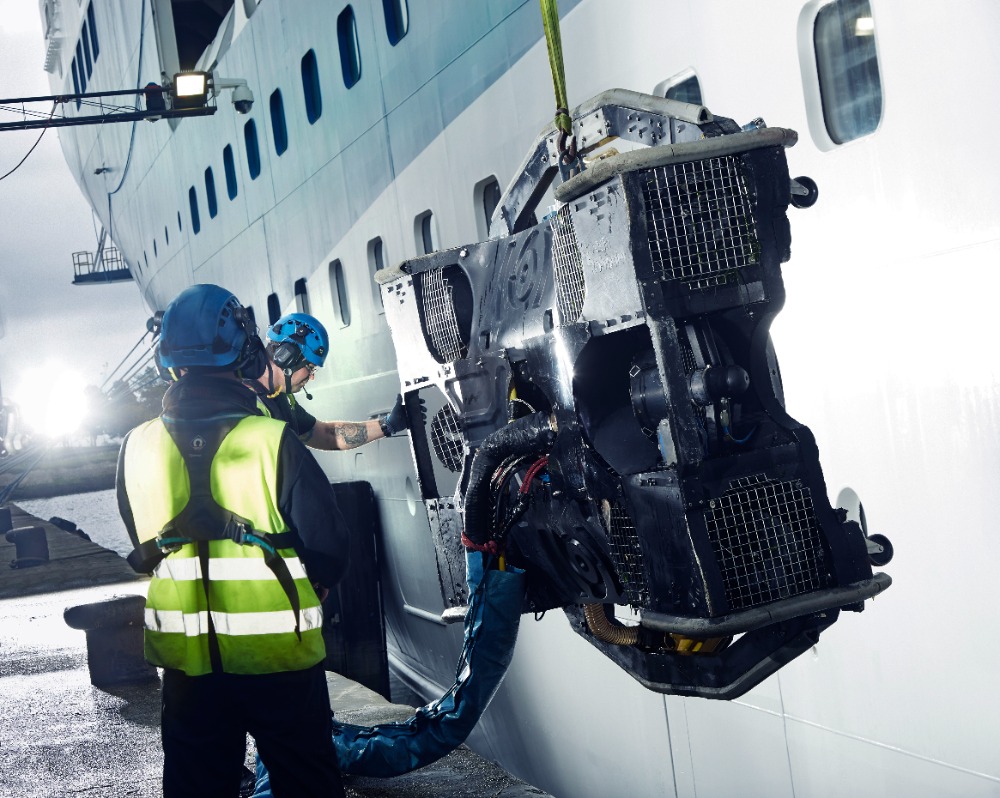Biofouling goes deeper than fuel efficiency
Tor M. Østervold, CEO of ECOsubsea, discusses the biodiversity crisis and the superyacht industry's global responsibility…
ECOsubsea has strengthened its partnership with AkzoNobel via the Intertrac Hullcare system, designed to monitor, maintain and extend the lifecycle of hull coatings. SuperyachtNews speaks with ECOsubsea CEO Tor M. Østervold about the partnership, the growing importance of proactive hull maintenance/monitoring, and the implications for the marine biosphere.
 ECOsubsea CEO Tor M. Østervold
ECOsubsea CEO Tor M. Østervold
Anti-fouling hull coatings have a terrible reputation, but the days of copper-rich carcinogenic paints designed to assault anything that touches the hull are, for the most part receding. Partnerships like this hopefully demonstrate a broader shift away from harmful industry practices. Østervold sees a change also, with more recognition of the biosphere as a whole. "I think it's a tectonic shift within the industry. Coatings and chemicals have been a workable solution for thousands of years. Now the focus is shifting to recognising the impact of the heavy metals, microplastics and, increasingly, non-native invasive species. It makes sense to take a condition-based maintenance view of the coatings, and it's fantastic that AkzoNobel is choosing this."
 The ECOsubsea in operation on a commercial hull
The ECOsubsea in operation on a commercial hull
The ECOsubsea system consists of a remotely operated vehicle that moves along the ship's hull (think a pool cleaner, but a lot more expensive looking and upside-down). The cleaning system aims to remove hull fouling without damaging the hull coating and, crucially, pump what is removed ashore to be analysed and disposed of. As Østervold affirms, "Our decade long collaboration with AkzoNobel gives their customers the ability to plan maintenance with the peace of mind of sustainable collection and disposal of hull biofouling."
The significance of biofouling is manifold. A freshly painted and floated vessel has its most efficient drag coefficient and consumes the least fuel. From the moment it hits the water, the growth begins microscopically and then more conspicuously. Eventually leading to entire mini-ecosystems of crustaceans, algae and molluscs. This significantly increases the drag, and therefore the fuel consumption. Owners are advised to inspect and clean hulls regularly between drydocks, with many commercial shipping charter contracts including a clean hull clause. However, port authorities and coastal states are banning or deterring hull cleaning methods without capture due to the environmental risks.
 Shoreside removal and processing of biofouling removed
Shoreside removal and processing of biofouling removed
With the superyacht industry's push towards sustainability targets and a decarbonised future, much of the focus is justifiably on CO2 emissions. The relationship between a clean hull and increased fuel consumption should always remain part of this discussion. However, the most existentially significant consequence of climate change is the destabilisation of ecosystems, and in turn, the ability for us to produce food and live in anything reassembling a sustainable way.
The most significant barrier to the transportation of harmful species around the world is the oceans. As a New Zealander, I know this all too well. Pre-human colonisation New Zealand had an ecosystem that thrived with only two native mammal species (the long and short-tailed bat). Almost every other niche was filled by birds, from the giant Moa that stood 10ft tall to the Haast eagle with a wingspan of eight feet. The ground fauna was littered with variations of flightless and ground-nesting birds, such as the precarious but persistent Kiwi. That all changed when the first humans arrived, bringing with them the Brown Rat, followed by European settlers with cats, stoats, ferrets and, eventually, possums from Australia. Within centuries the ecosystem was irrevocably changed.
According to a comparative analysis study, New Zealand has the highest proportion of threatened or endangered species on earth, including 90% of all seabirds, 84% of reptiles, 76% of freshwater fish and 74% of terrestrial birds. A closer examination of the marine ecosystem had starker implications for the marine industry; A study conducted by New Zealand's National Institute of Water and Atmospheric Research concluded that biofouling accounted for 70% of invasive aquatic species, compared to just 3% from ballast water.
The oceanic barriers that once kept the global ecosystems isolated and functioning are now crisscrossed by thousands of vessels every day. Many of the introductions that were going to happen have already taken place. (The proliferation of the Brown Rat to near-ubiquity for example) and many continents now have an irreversible anthropogenic ecosystem, defined by our interactions and introductions. The marine environment is still open and vulnerable to further, potentially disastrous introductions. And with the proliferation of the superyacht fleet, well beyond commercial shipping routes, we deserve scrutiny for our behaviour as an industry.
The coastline of Norway is one such ecosystem, as Østervold highlights, "The fact that we are transporting these species is a big problem. For example, in Norway this March, we discovered an invasive Japanese Algae (affectionately known as sea vomit). It started in the South, and by September, it had spread as far as Bergen. This species multiplies and covers an area 11 times larger in just 14 days, taking away almost all life on the seafloor, as nothing feeds on it."
"It's all about things getting real, right? Take COVID-19, for example; initially, we spoke about it as an abstract thing, but suddenly it was in local hospitals. That is what the invasive species are becoming." Says Østervold
"In my view, the number one service that we are providing is monitoring, which shows the condition of the whole boat. Monitoring is the first thing that we need," affirms Østervold. Monitoring and recording the biofouling is the scientific next step to evaluating the scale of the issue. Waiting for an invasive species to appear in a harbour and destabilising an ecosystem is placing the ambulance firmly at the bottom of the cliff, as Østervold continues; "It is also difficult because, even if we recognise that we have a big problem with biofouling, the only thing we can do without monitoring is say; 'ok, let's do more than we did yesterday' But that does not help anyone. We need to get our act together and start monitoring and measuring the weight and species breakdown of bio-foul removed."
Clean, energy-efficient hulls form a more sustainable backbone for the industry. With active monitoring of the conditions of the hull and the number and species of the unwanted passengers it is supporting, valuable data can be fed back to NGO's and scientific research institutions also. "We have an archive of thousands of video clips from our biofouling evaluations from many vessels," continues Østervold, "it is crucial for us to have these records because we need a baseline to know: what it is exactly we are doing something about?"
Image credit: ECOsubsea
https://journals.plos.org/plosone/article?id=10.1371/journal.pone.0010440#pone.0010440.s003
https://docs.niwa.co.nz/library/public/NIWAtr34.pdf
Profile links
NEW: Sign up for SuperyachtNewsweek!
Get the latest weekly news, in-depth reports, intelligence, and strategic insights, delivered directly from The Superyacht Group's editors and market analysts.
Stay at the forefront of the superyacht industry with SuperyachtNewsweek
Click here to become part of The Superyacht Group community, and join us in our mission to make this industry accessible to all, and prosperous for the long-term. We are offering access to the superyacht industry’s most comprehensive and longstanding archive of business-critical information, as well as a comprehensive, real-time superyacht fleet database, for just £10 per month, because we are One Industry with One Mission. Sign up here.
Related news

AkzoNobel acquires New Nautical Coatings
AkzoNobel is due to acquire New Nautical Coatings, owner of the Sea Hawk yacht coatings brand
Business
Related news
AkzoNobel acquires New Nautical Coatings
4 years ago
NEW: Sign up for
SuperyachtNewsweek!
Get the latest weekly news, in-depth reports, intelligence, and strategic insights, delivered directly from The Superyacht Group's editors and market analysts.
Stay at the forefront of the superyacht industry with SuperyachtNewsweek




